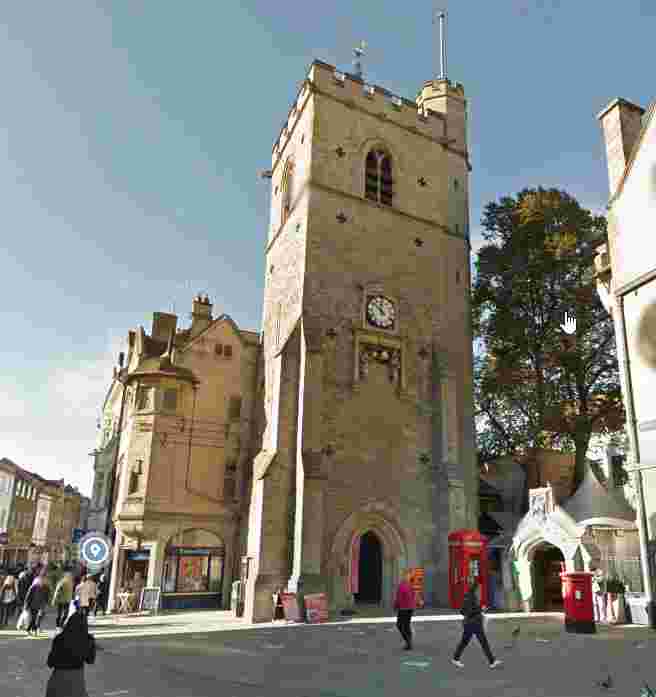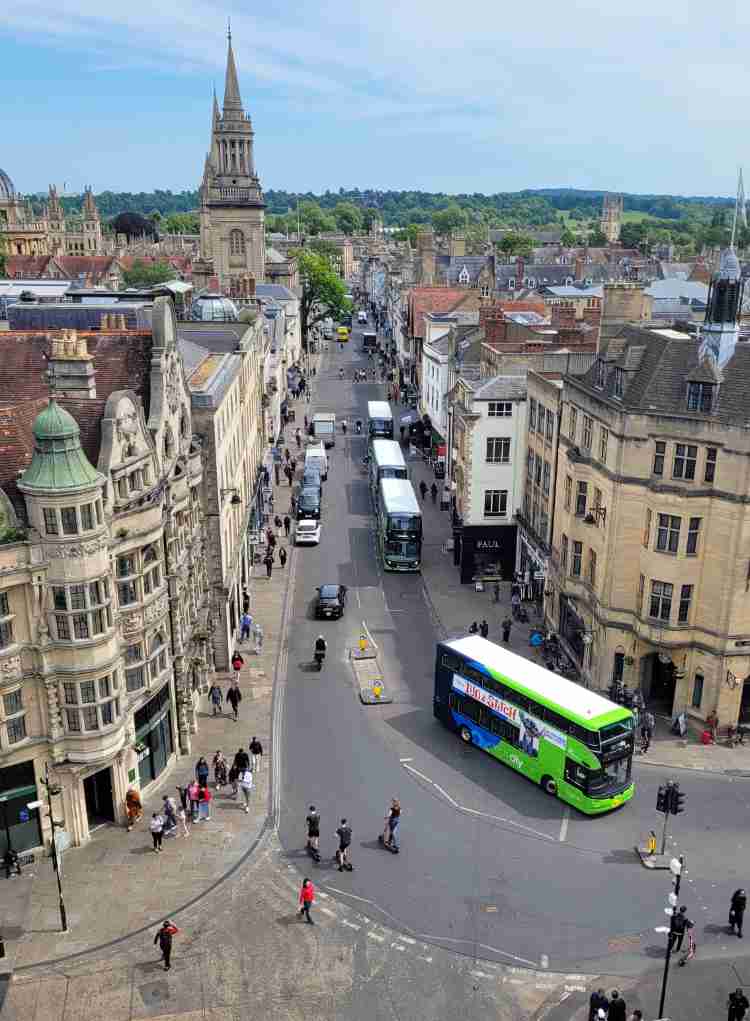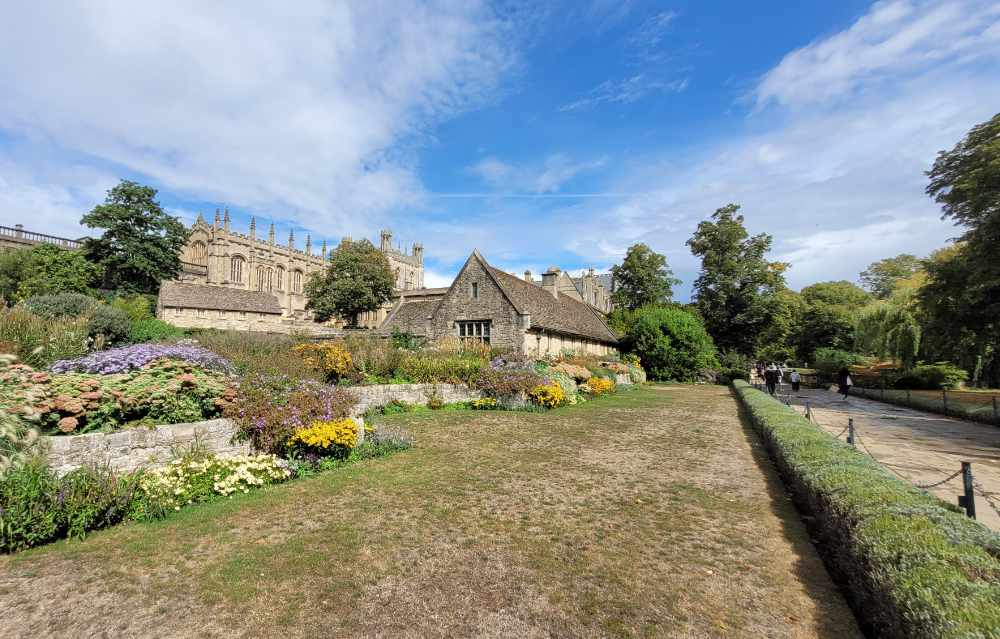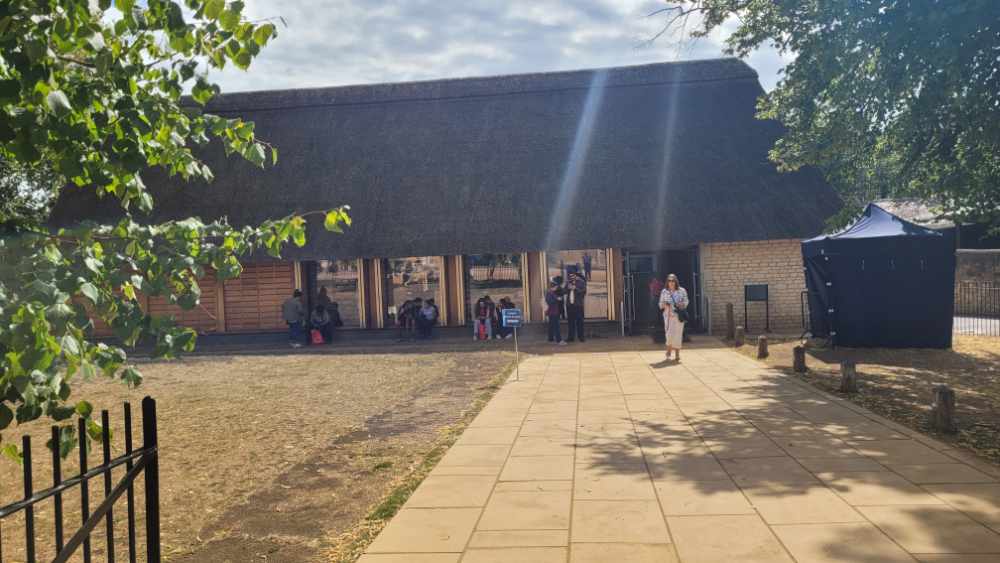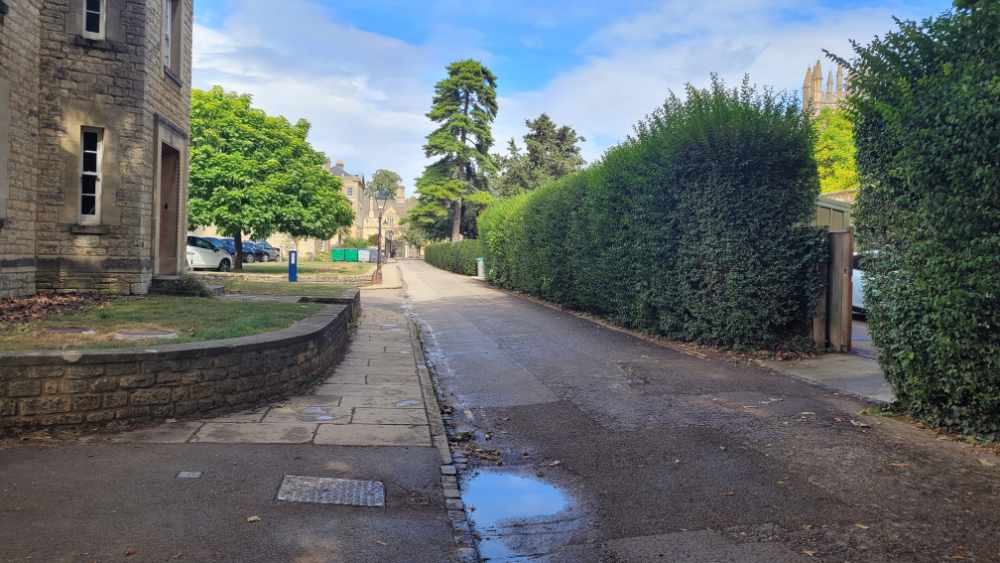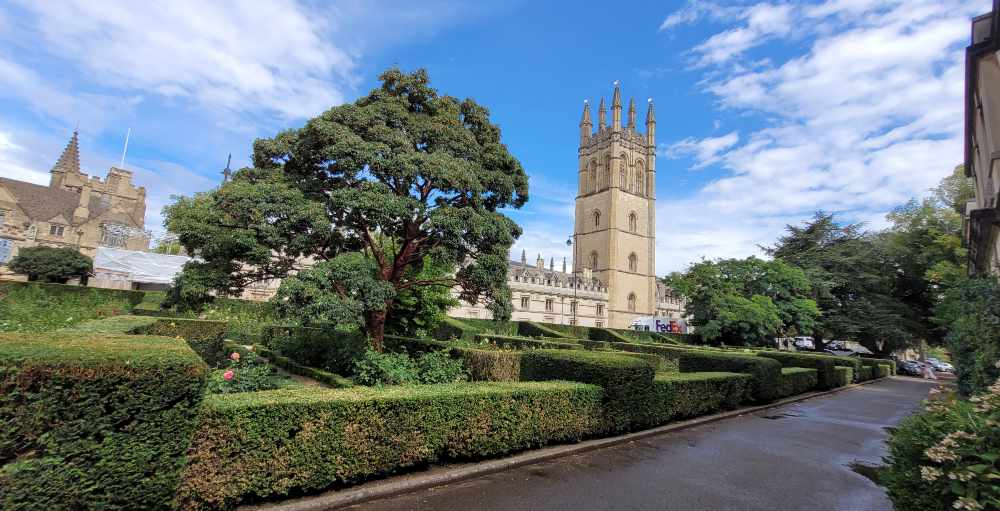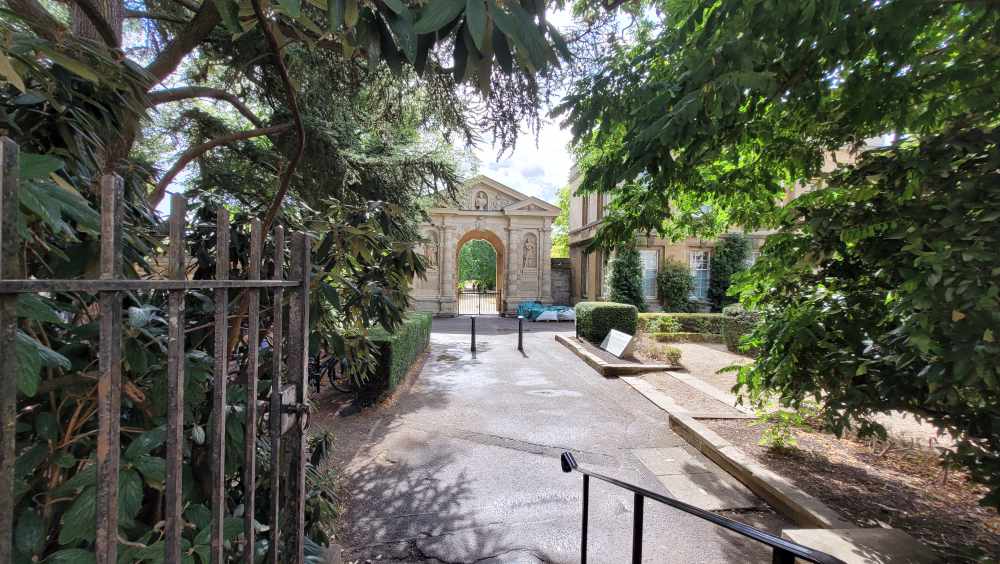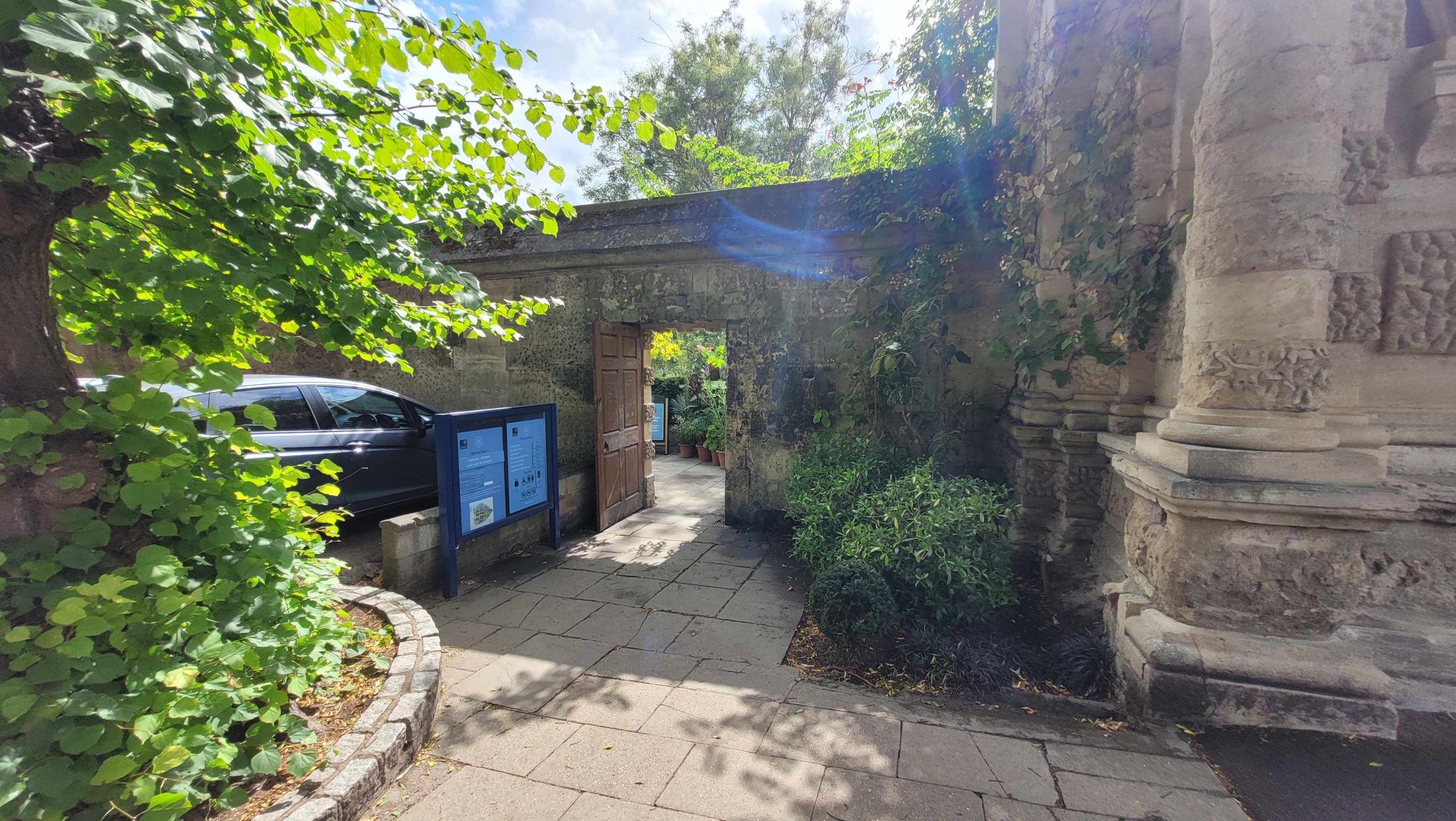Oxford – Walk 2
The Carfax tower to the Botanical Gardens via Christ Church.
A gentle walk from Carfax, past the grandeur of Christ Church, and along the meadows to the tranquil beauty of the Botanic Garden.

The Meadow Building (viewed here from Broad Walk) at Oxford’s Christ Church is a striking example of Victorian Gothic architecture overlooking the college meadow.
Starting from Carfax, the traditional centre of Oxford, the walk begins amid the bustle of the city. As you head south along St Aldate’s, the striking tower of Christ Church soon comes into view. This grand college, with its iconic Tom Tower and vast meadow, offers a glimpse into Oxford’s rich academic and architectural heritage. Walking past its gates, you can often hear the distant sound of choir practice drifting from the chapel.
Continuing along the Broad Walk beside Christ Church Meadow, the path opens up to green space and riverside views. The spires of the city give way to trees and birdsong as you approach the eastern end. Crossing Magdalen Bridge, you arrive at the Oxford Botanic Garden — a peaceful retreat filled with diverse plants, historic glasshouses, and the gentle flow of the River Cherwell.

The Meadow Building (viewed here from Broad Walk) at Oxford’s Christ Church is a striking example of Victorian Gothic architecture overlooking the college meadow.
Map Instructions
Navigating the Map
Follow the numbered markers in ascending order. If the route loops back on itself, markers for both directions may appear at the same location or appear out of sequence. Directions are given at the bottom of the popup associated with each numbered marker.
Interacting with the Markers
Click/tap the numbered markers for information about that point and route directions. Click on the lettered markers for points of interest along the route.
Zooming
Use the zoom controls in the top left corner (e.g. + / −) to zoom in and out of the map. On touch screens, you can also pinch with two fingers. On a laptop, use the mouse wheel to zoom in and out.
Re-centering
Click the ‘RE-CENTRE MAP’ button to re-centre the map.
User Location
If using a mobile device, your location is shown as a blue dot, so you can easily check you’re on course.
Scrolling the Page
If on a touch screen, use the bar on the left to scroll the page.
Route Summary & Highlights
Below is a step-by-step breakdown of the route. Each numbered section matches the markers shown on the above map and includes clear directions to guide you along the way.
Beneath each step, you’ll also find information about nearby points of interest (marked with letters on the map), helping you discover more as you go. You can expand each step to read through the journey in order or use it as a quick overview before setting off.
The Carfax Tower
Directions:
Cross over Cornmarket Street and walk along the High St. to the Crossing. Cross over the High Street into St. Aldate’s walking southwards past Christ Church on your left.
The High Street
Directions:
Cross over the high st. and walk along St. Aldgates
The Bear Inn
Tom Tower
Christ Church Cathedral
Beginning of Broad Walk
Christchurch Visitor Centre
The Meadow Building
Middle of Broad Walk
End of Broad Walk
Directions:
Turn left into ‘Christchurch meadow walk’.
Rose Lane
Directions:
Make your way through the wrought iron gate. It closes at 9pm
The Rose Garden
High Street
Directions:
Turn right at the high street.
Main Entrance to the Botanical Gardens.
Directions:
Turn right into the Botanical gardens and head towards the ticket office.
